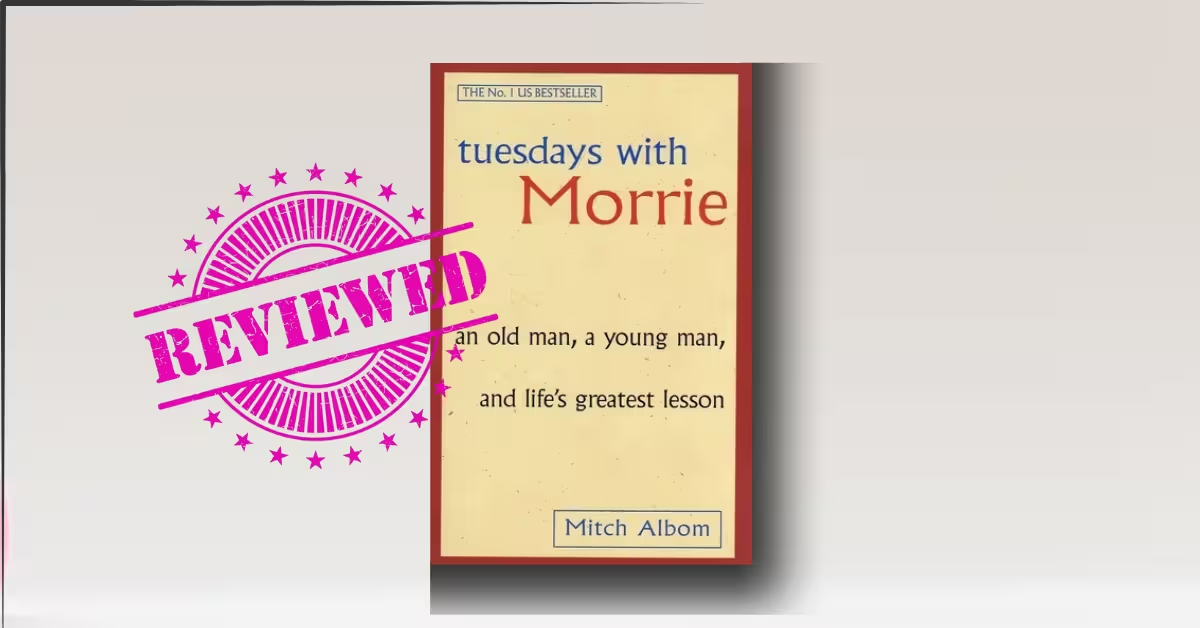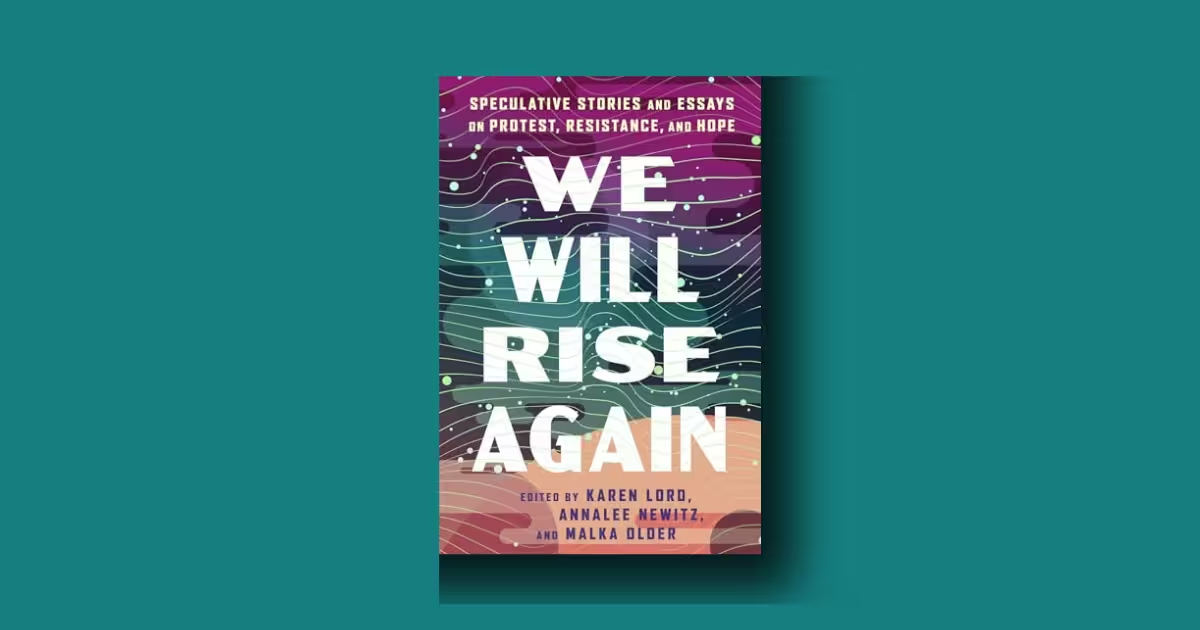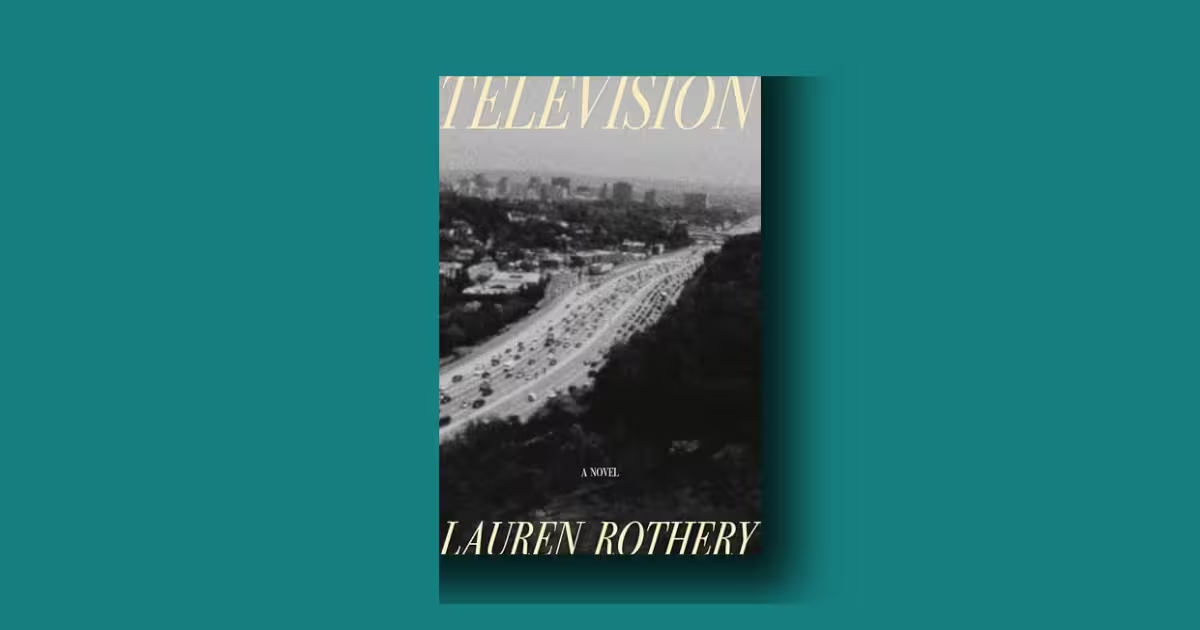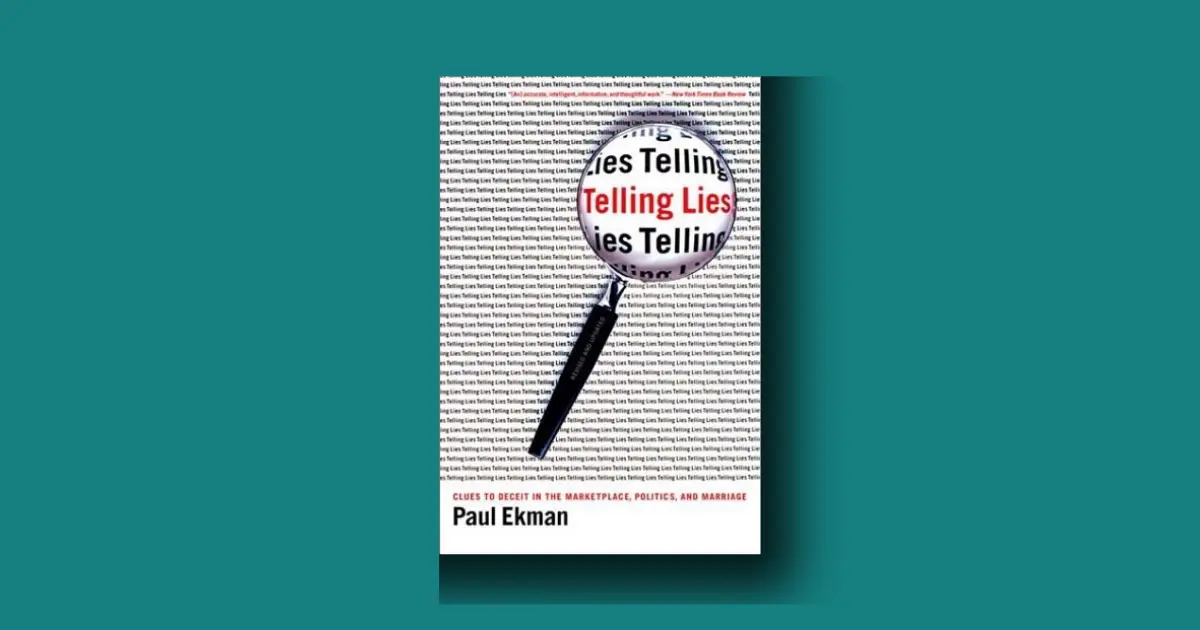We’re busy, successful, and secretly starving for meaning, and Tuesdays with Morrie solves that by translating end-of-life clarity into everyday choices we can actually live by. Instead of self-help clichés, it offers field notes from a dying sociologist—practical wisdom tested against time, illness, and love.
When you really accept death—not abstractly, but as a daily companion—you stop sleepwalking, reorder your life around love, community, and purpose, and finally “learn how to live”.
Evidence snapshot
- Primary source: Albom’s taped Tuesday dialogues with his former professor, Morrie Schwartz, recorded during Morrie’s final months with ALS (as seen in the book’s narrative frame and widely accessible archival text).
- Public reception: Tuesdays with Morrie stayed 206 weeks on the New York Times Nonfiction Bestseller list and has sold tens of millions worldwide; many outlets cite ~18 million copies for the book alone and 40M+ across Albom’s works.
- Medical context (ALS): The “slow erasing” of voluntary movement in ALS foregrounds Morrie’s stripped-down priorities; median survival is typically 2–5 years after diagnosis.
- Media documentation: ABC’s Nightline filmed multiple conversations at Morrie’s home with Ted Koppel, corroborating key scenes and aphorisms quoted in the book.
Best for / Not for
Best for: readers seeking a human, secular-friendly conversation about mortality, caregivers looking for language to hold difficult days, students and leaders wanting a values reset, and anyone trapped in “more is better” culture. Not for: readers who need complex plot mechanics or strictly academic philosophy; skeptics of memoir as evidence may find the book’s emotive method too intimate—though that intimacy is precisely its method.
Table of Contents
1. Introduction
Tuesdays with Morrie: An Old Man, a Young Man, and Life’s Greatest Lesson (Doubleday, 1997) is a memoir by journalist and author Mitch Albom that chronicles his Tuesday visits with sociologist Morrie Schwartz during Morrie’s final months with ALS; the book evolved from Albom’s taped sessions and blossomed into a cultural touchstone, spending 206 weeks on the NYT list and regularly cited as having sold in the high eight figures globally.
Context. The book sits at the intersection of memoir, philosophy-of-life, and narrative sociology: themes include the meaning of life, family, work, aging, forgiveness, and, finally, death. Its documentary feel is reinforced by the well-documented Nightline interviews with Ted Koppel filmed at Morrie’s home, which the narrative also describes.
Purpose. The central thesis is stated again and again by Morrie with startling calm: “Once you learn how to die, you learn how to live.” Accepting mortality dissolves false urgencies and reranks values around love, service, and presence.
This isn’t a book about dying; it’s a handbook for living.
Albom arrives successful yet unfulfilled, and Schwartz, already in a wheelchair, insists that love and community are what remain when the marketable self is peeled away, that “love is the only rational act,” and that our culture’s “brainwashing” toward more-money-more-stuff leaves people half-asleep. The memoir’s quiet power is how ALS—a disease that melts muscle and breath—becomes a truth serum; with each week, Morrie’s body shrinks, but his voice expands into the reader’s interior.
The purpose is not to inspire pity; it’s to recalibrate our attention before it’s forced upon us by loss.
Morrie’s class meets on Tuesdays because that was the rhythm Albom and Schwartz had long shared.
The curriculum is life: love, work, family, aging, regret, forgiveness, and death.
And the final exam is a funeral you attend while you’re still alive—Morrie’s “living funeral,” where people say what they mean before silence takes the microphone.
What remains after the last Tuesday is not a doctrine but a posture: presence.
2. Background
Morrie did shape the lives of generations at Brandeis, was documented by national media, and became a bridge for millions between the fear of death and the art of living.
Context matters because Tuesdays with Morrie is less argument than apprenticeship.
Morrie’s life—Bronx childhood marked by poverty and loss, years of teaching and activism, and a late-life diagnosis of ALS—creates a biographical gradient along which his aphorisms acquire weight: he refused to retire from meaning-making, continued teaching from his living room, and even adjusted his interviews to “check out” the famous anchor first. Meanwhile, Albom, a sports columnist and broadcaster, embodies modern achievement’s paradox: he had more reach than ever and less touch than he wanted.
ALS brings the background forward because time compresses and priorities sharpen.
And the reader senses that the disease is a character that clarifies the rest.
That clarity, paired with Albom’s tape recorder (explicit in the book) and ABC’s documentation, gives this memoir the verifiability rare in philosophical testimony.
It’s also why the book has been used in classrooms, grief-support circles, and even leadership retreats: not as sentimental comfort, but as a framework for choosing.
3. Tuesdays with Morrie Summary
Framing device. Albom, years after graduation, is flipping channels when he hears Ted Koppel ask, “Who is Morrie Schwartz—and why will you care about him?” The line stops him cold; within days, Albom is on a plane to Boston, and the Tuesdays begin.
The curriculum—refracted through recurring “Tuesdays”—moves from feeling sorry for yourself to regret, death, family, emotion, aging, money, love, marriage, forgiveness, and the readiness for good-bye. At each node, Morrie contrasts cultural scripts (what the market rewards) with human scripts (what a life requires), often via pithy lines Albom captures as “aphorisms.”
“Once you learn how to die, you learn how to live.”
“The most important thing in life is to learn how to give out love, and to let it come in.”
“Love is the only rational act.” (Morrie quoting Stephen Levine)
The diagnosis & decision. After being told he has ALS—“a brutal, unforgiving illness” with no cure—Morrie decides to teach until he can’t, then to keep teaching from home, and finally to turn his dying into a final project: “Study me in my slow and patient demise. Watch what happens to me. Learn with me.”
On death. Morrie’s method is not denial but regular rehearsal: a “little bird” on the shoulder each day asking, Is today the day? Am I being the person I want to be? If you truly believe you will die, he says, you live differently—less impressed by status, more available to people.
“Everyone knows they’re going to die, but nobody believes it. If we did, we would do things differently.”
On self-pity & detachment. He allows himself a brief cry each morning—then returns to gratitude; he practices “detachment” in the Buddhist sense, letting feelings penetrate fully and then letting them pass, so that even fear can be set down: “Turn on the faucet. Wash yourself with the emotion … then say, ‘All right. That was my moment with loneliness.’”
On family. Without family, he argues, there’s “no spiritual security”—no one whose eyes remain on you “the whole time”: “It’s not money; not fame; not work” that provides the net, it’s family.
On culture & money. Morrie calls out American brainwashing: “More is good” is repeated until it feels like oxygen, but money and power are not substitutes for tenderness; status will get you nowhere, he warns Albom, “Only an open heart will allow you to float equally between everyone.”
On aging. Aging is growth; if you cling to being twenty-two, you stay twenty-two in ignorance. The older self includes every prior age—“part of me is every age”—so envy can be released when you recognize you’ve been where the young are going.
On marriage. Morrie favors candor: share values, support growth, and accept imperfection. He is not prescriptive but clear: relationships are where meaning stabilizes.
On forgiveness. Forgive others and yourself—now—because delay is a cruel luxury. Morrie models this by revisiting old ruptures, not to win battles, but to bury weapons.
On good-bye. The final Tuesdays slow into a hush; Albom rubs Morrie’s feet, adjusts the pillows, and listens between breaths. The last exchange becomes a ritual of mutual blessing, and Albom learns that “death ends a life, not a relationship.” (A line the broader reading culture now quotes constantly).
Every chapter reads like a small commencement speech to one person.
Morrie’s “classroom” is a recliner facing a window and a hibiscus that slowly loses its leaves; the oxygen cannula appears as the disease climbs upward, and Albom’s tape recorder—awkward at first—becomes an ethical instrument to remember, not to extract, moments like the “living funeral” where friends say what the dead never hear.
The Nightline cameras create a public seminar: viewers write letters from across the world, calling Morrie a “prophet”; Morrie shrugs off the title and answers with gratitude and specificity, reminding us that the point of advice is relationship, not performance.
That humility is the pedagogy.
If you watch him lose the ability to wipe, to lift, to swallow, you also watch him increase in what cannot be measured: mercy, attention, and freedom from performance.
The last class ends not with a final exam, but with an afterword: Albom’s life, reordered around presence and service, the relationship enduring, just as the book promises.
And because Tuesdays with Morrie is a conversation, finishing it feels less like closing a book and more like moving to the next Tuesday.
3. Highlighted lessons
- Meaning ≠ metrics. Beware of a culture that keeps you “half-asleep” with goals that don’t love you back; choose love, community, creation.
- Practice death to practice life. The “little bird” test makes choices simpler in the only time that exists—today.
- Let love in—and out. “The most important thing in life is to learn how to give out love, and to let it come in.”
- Detach after you feel. Feel fully—then release; otherwise fear runs your calendar.
- Family is security. “It’s not money. Not fame. Not work.” It’s the eyes that stay on you “the whole time.”
- Aging expands you. “Part of me is every age,” so stop competing with your past self.
- Status is air. “Only an open heart will allow you to float equally between everyone.”
- Forgive now. Yourself and others, before the window closes.
- Love persists. “Death ends a life, not a relationship.”
4. Tuesdays with Morrie Analysis
Does the author support his claims? Albom’s method is thick description: vignettes, aphorisms, and scene work with verifiable anchors—Nightline footage, taped conversations, and contemporaneous letters—rather than footnoted studies. As a genre choice, this is fitting: the “argument” is embodied. It’s not that Morrie proves a theorem about love; it’s that love works in the room as dependency increases (Morrie’s delight in human touch even during the humiliations of ALS is a repeated case study).
Is it persuasive? Several factors heighten credibility:
- ALS’s medical reality—median survival 2–5 years—disallows sentimental fantasy and grounds urgency.
- Public documentation via ABC and global readership validates that the dialogue occurred at the time/pace Albom claims.
- Cultural resonance—the book’s 206 weeks on NYT lists—suggests it speaks to more than individual pathos.
Contribution to the field. This memoir functions like practical moral psychology: it offers a portable set of practices—the bird test, the morning cry, the detachment drill, the “open heart” filter for status—that can be immediately applied. And it anticipates a now-robust literature on mortality salience improving values clarity (the book is often taught alongside contemporary psychology and palliative-care materials). Even reviewers a generation later note its continuing reach and nearly 18 million copies sold globally.
What convinces is not aphorism but applied aphorism.
When Morrie says, “Love each other or perish,” his room literally fills with visitors; when he says, “Only an open heart…,” he answers every letter, including from a woman whose long grief spills four pages; when he says, “Detach,” he demonstrates it mid-coughing-fit, naming fear and then finding a calm surface. There is a felt experiment at work: does the advice make the room kinder, clearer, more courageous? The answer, observable on the page, is yes.
Of course, a critic could ask for randomized trials of tenderness.
But in the domain where we live most of our lives—kitchen tables, hospital rooms, old classrooms—the method holds.
The book contributes by making metaphysics actionable without sectarianism: Morrie borrows from Buddhism, Judaism, Christianity, and poetry, while refusing to be trapped by any single gate.
That generosity makes the lessons portable across cultures and decades, which helps explain their search-engine longevity.
5. Strengths & weaknesses
Strengths (pleasant/positive).
- Uncluttered clarity. The line “Once you learn how to die, you learn how to live” rarely leaves the mind, and the little bird practice is usable before breakfast.
- Embodied pedagogy. The memoir shows love as care work—adjusting pillows, rubbing feet, wiping brows—so love stops being an abstraction and becomes a to-do list.
- Counter-cultural audit. Morrie’s critique of “more is good” lands harder today, and is phrased with memorable economy—“Money is not a substitute for tenderness”.
- Emotional permission. The “morning cry” plus detachment gave me a method for metabolizing hard days without performing stoicism.
Weaknesses (unpleasant/negative).
- Aphorism allergy. If you bristle at aphorisms, the signature lines may feel too polished; the counter is in the scenes that stress-test them.
- Under-theorized sociology. Readers wanting deep theoretical scaffolding will need to pair this with Durkheim, Frankl, or contemporary grief science; Albom intentionally prioritizes story over scaffolding.
- Sentiment risk. The book’s tenderness is the point—but if your tolerance for sentiment is low, you may misread tenderness as simplification; the hospital-room concreteness argues otherwise.
6. Tuesdays with Morrie Reception
- Sales & staying power. Tuesdays with Morrie stayed 206 weeks on the NYT list, with global sales reported in the tens of millions, and ongoing anniversary editions expanding reach.
- Critical arc. From early NYT reviews to recent retrospectives, critics note that while some lines can sound simple, their contextual gravity—a beloved teacher dying—makes them land differently; recent reviewers still emphasize the book’s unique blend of intimacy and universality(The Times).
- Cultural afterlives. The book is often assigned in high school/college courses on ethics, sociology, or death & dying; Goodreads and SparkNotes show thousands of readers returning to its quotes—“Death ends a life, not a relationship,” “Love wins. Love always wins.”—keeping phrases discoverable and searchable for new audiences.
- Media documentation. The Nightline specials, still quoted and archived, anchor the narrative in broadcast history.
7. Comparison with similar works
- Viktor Frankl, Man’s Search for Meaning. Frankl’s logotherapy grounds meaning in responsibility and future-oriented purpose forged in extremity. Morrie’s approach overlaps but tilts toward relational presence and gentleness; read together, they broaden meaning from inner stance to interpersonal practice.
- Atul Gawande, Being Mortal. Gawande offers a clinician’s systems-level critique of end-of-life care; Morrie offers the patient-teacher’s micro-ethics; together, they become a theory-and-practice bundle.
- Joan Didion, The Year of Magical Thinking. Didion anatomizes grief’s cognition; Morrie pre-emptively teaches grief literacy before the loss.
- Paul Kalanithi, When Breath Becomes Air. Kalanithi’s surgeon-turned-patient perspective dialogues beautifully with Morrie’s: both are short, precise, and unafraid.
8. Conclusion
Overall impression. Tuesdays with Morrie is smaller than a textbook and larger than most curricula because it does what syllabi rarely do: it changes the order of your day. When the “little bird” lands, you reschedule a meeting, call your mother, forgive someone, or cook with your partner instead of scrolling.
Who will benefit most?
- General readers feeling spiritually dehydrated by success.
- Students & teachers seeking an ethics lived out loud.
- Caregivers & clinicians needing a shared language for meaning and mercy.
- Leaders rethinking culture: if “only an open heart” allows us to float between people, teams change.
For specialists? Yes, if paired with clinical and sociological materials; Morrie’s room teaches what to value, and your field tells you how to operationalize it.
9. Tuesdays with Morrie Quotes
“Once you learn how to die, you learn how to live.”
“The most important thing in life is to learn how to give out love, and to let it come in.”
“Love is the only rational act.”
“Everyone knows they’re going to die, but nobody believes it. If we did, we would do things differently.”
“Only an open heart will allow you to float equally between everyone.”
“Money is not a substitute for tenderness.”
“Death ends a life, not a relationship.”
Related



